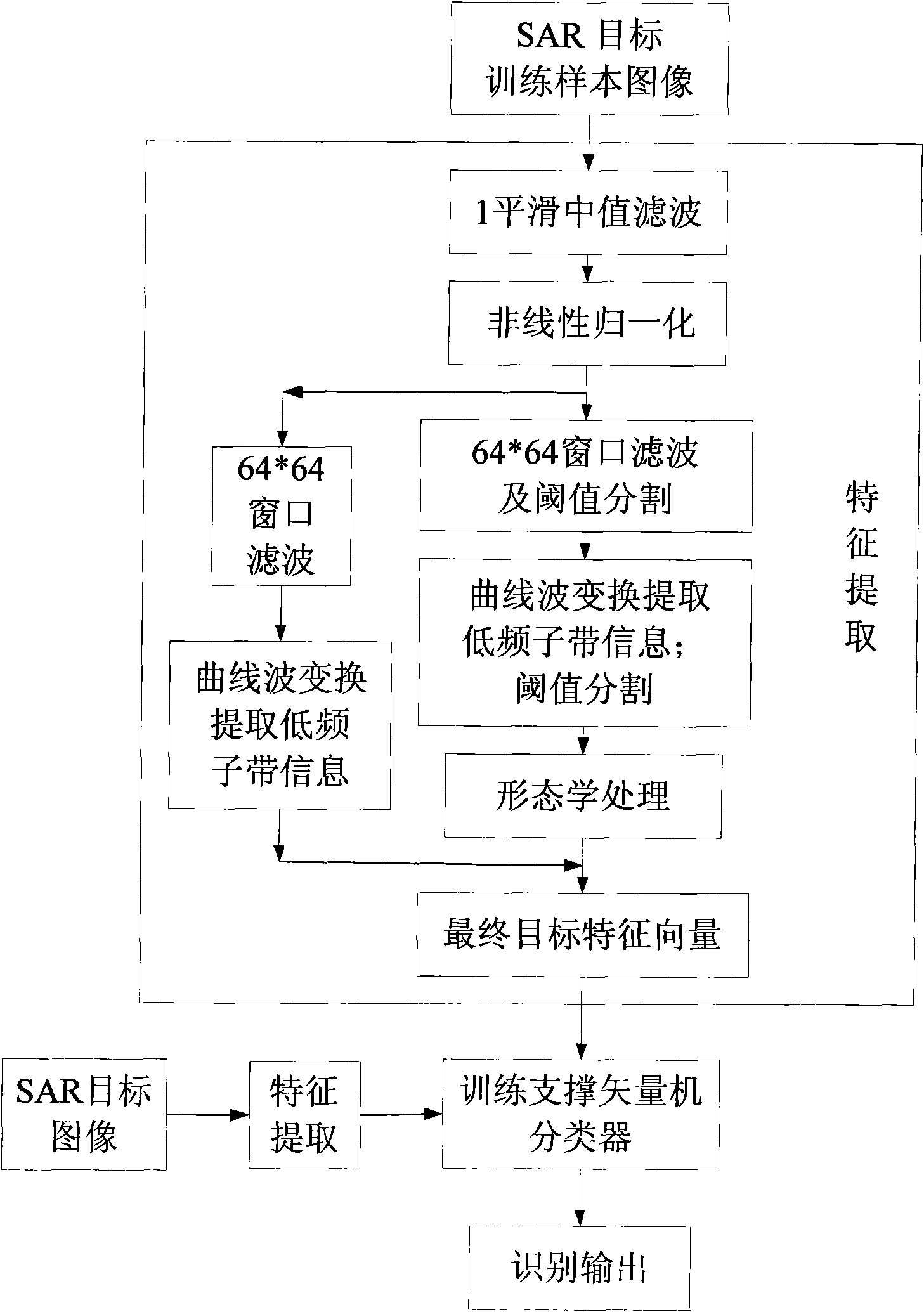Method for recognizing SAR target based on curvelet transform
A target recognition and curve wave technology, applied in the field of SAR target recognition and target recognition, can solve the problems of high time cost in the matching process, high computational complexity, affecting the SAR target recognition rate, etc., and achieve computational complexity and time cost. The effect of reducing and high target recognition rate
- Summary
- Abstract
- Description
- Claims
- Application Information
AI Technical Summary
Problems solved by technology
Method used
Image
Examples
Embodiment Construction
[0022] refer to figure 1 , the present invention comprises as follows to the recognition step of SAR target:
[0023] Step 1, perform smooth median filtering on the original SAR target image, the specific operation is as follows:
[0024] (1.1) Select a 3×3 template, and place the template in such as figure 2 Traverse through the original image shown in (a), and coincide the center of the template with each pixel position;
[0025] (1.2) Read the gray value of each pixel under the template;
[0026] (1.3) Arrange these gray values in a row from small to large;
[0027] (1.4) Find the intermediate value of each arrangement, and record it as μ;
[0028] (1.5) Assign the μ value to the pixel corresponding to the center position of the template to complete the smooth median filter, such as figure 2 (b) shown.
[0029] Step 2, using the mean value and variance of the filtered image to perform nonlinear normalization processing on the filtered image.
[0030] The purpose ...
PUM
 Login to View More
Login to View More Abstract
Description
Claims
Application Information
 Login to View More
Login to View More - R&D
- Intellectual Property
- Life Sciences
- Materials
- Tech Scout
- Unparalleled Data Quality
- Higher Quality Content
- 60% Fewer Hallucinations
Browse by: Latest US Patents, China's latest patents, Technical Efficacy Thesaurus, Application Domain, Technology Topic, Popular Technical Reports.
© 2025 PatSnap. All rights reserved.Legal|Privacy policy|Modern Slavery Act Transparency Statement|Sitemap|About US| Contact US: help@patsnap.com



